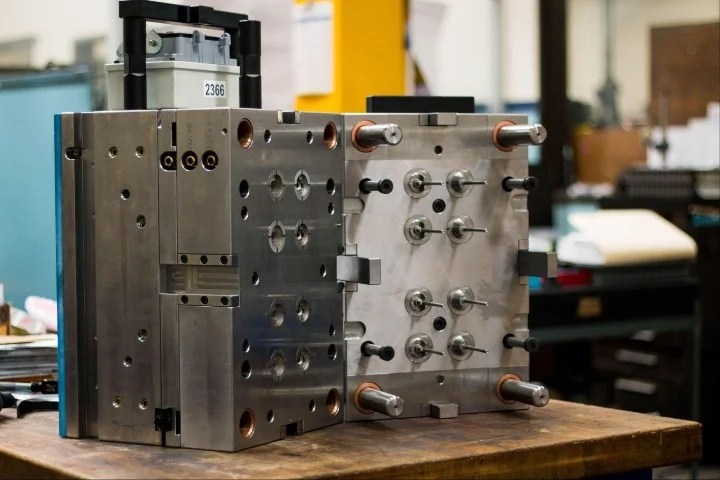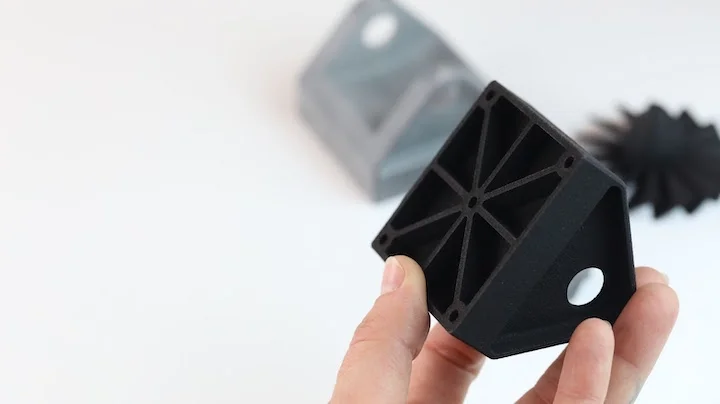Time to read: 3 min
When learning CAD, some words may seem foreign–extrusion, chamfer, radius, and fillets aren’t exactly intutive. No worries, read up on the terms below as a refresher or an introduction to the most common CAD terms and operations.
Main CAD Operations
Extrude / Extrusion: An extruded face of an object expands or contracts (or cuts through/against) empty space or another part of the object. This enables part of the object to grow or shrink, either organically in a 3D environment or based upon a two dimensional drawing or sketch in a flat plane. An extruded shape is referred to as an extrusion. In finished parts, an extrusion is formed by continuously shaping a material through a jig or mold of some kind.
Sweep: A 2D shape or form that is extruded along a 2D line or curve in order to create a three dimensional object.
Loft: A transitional shape cast between two or more sketches / 2D objects. As with ribs or drafted solids, a lofted form can ease mechanical stresses between surfaces in a finished part.
Coil: In 3D modeling, a tool is available to create spring geometry or to coil part of an object into the shape of a spring or helical solid.
How to Refine CAD Models
Chamfer: A chamfer is a beveled edge connecting two surfaces. If the surfaces are at right angles, the chamfer will typically be symmetrical at 45 degrees. The edges of objects or models are typically chamfered, although the internal circumferences of holes are also frequently chamfered to aid in the fitting of fasteners.
Fillet: In mechanical engineering, a fillet is a rounding of an interior or exterior corner or edge of a part design. Fillet geometry, when on an exterior corner/edge is of concave function (in these cases, fillets are typically referred to as rounds), whereas a fillet on an interior corner is convex.
Radius: In circles, the distance between the central point and any point on the circumference. Determining the radius of manufactured circles is crucial in adjusting their relationships to other parts/geometries and their overall scale.
Clone / Copy: A chamfer is a beveled edge connecting two surfaces. If the surfaces are at right angles, the chamfer will typically be symmetrical at 45 degrees. The edges of objects or models are typically chamfered, although the internal circumferences of holes are also frequently chamfered to aid in the fitting of fasteners.
Draft: Modeled against two planes of an object, one plane is drafted to change its position relative to the other plane by a user-set number of degrees. As with ribs, drafting a surface can change its relationship to other faces and ease mechanical stresses exerted on a final part by reducing the number or severity of sharp intersections between surfaces.
Emboss: A raised or recessed feature created from a profile or 2d sketch (often text or other associated small features).
Rib: A structure between two planes that adds additional strength by easing the angle at which the two planes intersect. This additional material helps transfer loads between the surfaces/adjoining objects.
Lip: A feature that joins two 3D objects along a specific line or seam.
Geometry References
Vertex: A single point in space usually on an object’s surface; the building blocks of all polygonal objects. Lines intersecting create vertices where they meet.
Face: One side of an object in a plane, can often be extruded to become three dimensional.
Rest: A flat area on the side of a curved object that protrudes to the inside and outside of an object. This feature can aid in joining features of two separate finished parts or in placing geometry or holes on a flat surface within the confines of a curved object.
Plane: A flat area or zone that can be used in triplicate to define a three dimensional space. The XY, XZ, and YZ planes can accomplish this. In order to plate an object properly for 3D printing, assigning the base of the object to the XY plane allows it to sit flat in the desired orientation when imported into a 3D printer’s host software or slicing program.
Spline: A spline is a curved line, defined by three or more vertices. It can be 2D, with all its vertices on a single plane, or 3D.

